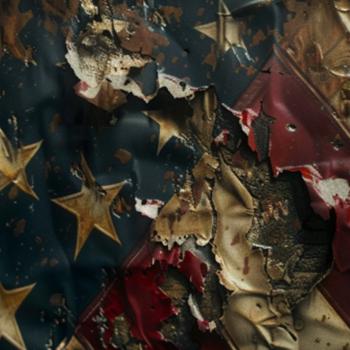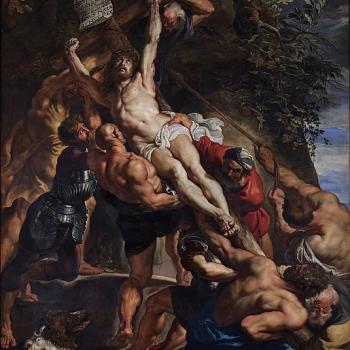Back in the 1930’s, an elderly woman wrote a memoir about her life on the American frontier. But no one would publish it. So she recast her memories as a series of children’s novels, giving the world the immortal Little House on the Prairie books.
Now that original manuscript, entitled Pioneer Girl has been published in an annotated edition that gives the complete historical context of this woman’s remarkable life. The 472-page book has become a smash hit, to the point that its publisher, the 7-employee South Dakota Historical Society Press, can’t print enough copies to keep up with the demand.
From Nora Klug, Laura Ingalls Wilder finds new stardom in an old-fashioned way – The Washington Post:
One of the most coveted books of the season is not a thriller or a celebrity tell-all but an oversize, 472-page annotated autobiography with hundreds of detailed notes and several appendixes. It weighs roughly three pounds and is printed on specially cut paper.
Unlike typical New York Times bestsellers, it is not available as an e-book — and might not be for some time. Finding a hardcover edition has been for many an exercise in frustration. Amazon.com can barely keep the book in stock, and one secondary seller on the site is hawking a first edition for $499 (plus shipping), or about 12 times the cover price of $39.95.
The book is “Pioneer Girl: The Annotated Autobiography,” an expanded version of a memoir by celebrated “Little House on the Prairie” author Laura Ingalls Wilder. Wilder herself couldn’t find a publisher for the memoir 85 years ago. So, working with her daughter, she used it as the basis for the series of novels still so popular today.
That a hardcover book of this heft and complexity — in addition to the side notes, there are scores of maps, illustrations and photographs — has been such a hit has surprised everyone, including the publisher. The South Dakota Historical Society Press is a seven-person operation based in Pierre. In the five months since the book’s release, it has been trying frantically to print more copies to keep up with demand (the first printing of 15,000 copies sold out in just a couple of weeks). “When people have to wait, they want it more,” says Nancy Tystad Koupal, director of the press. . . .
“Pioneer Girl” is a notable work of scholarship, a great read and a handsome — if physically unwieldy — volume that would do any respectable coffee table proud.
The core of the book is Wilder’s unvarnished personal story, as she recorded it in six pencil-written notebooks about 1929 or 1930, when she was in her early 60s and recently retired from her job as a columnist at the Missouri Ruralist. It covers 16 years of her life, beginning in 1869, as her family famously made its way across the largely uncharted West.
Supplementing Wilder’s autobiography are Hill’s extensive notes. Based on numerous primary sources, including diaries, letters, manuscripts, genealogies and government records, they provide ample background information on the history that shaped the author’s life. (It must be said, though, that these notes can make reading the book a kind of Talmudic experience, as nearly every paragraph has a comment, and some have comments within comments. This may be the most heavily footnoted bestseller since David Foster Wallace’s “Infinite Jest.”)
The notes also demonstrate how much Wilder’s experience differed from her fictionalization of it. The tales diverge from the start, according to Hill. Where the first book in the series, “Little House in the Big Woods” (1932), begins in Wisconsin, the memoir begins in Kansas. Also, she points out, “the fictional family always moves west to the promised land, finding a home where their dream can come true.” In fact, Wilder’s memoir shows that “the real Ingalls family suffered more dire financial setbacks. They moved east, and for a short period abandoned the idea of homesteading,” she says. “They ran a hotel.”
Such details weren’t included in the novels, Hill says, because “thematically they did not fit in with the vision of a courageous family facing adversity with optimism.”
Hill, who spent about five years on the book, notes numerous other instances when Wilder’s memories and her fiction diverge. For example, the illness that famously took Mary’s eyesight in “By the Shores of Silver Lake” (1939) was not the result of scarlet fever, as in the novel. In her memoir, Wilder posits that it may have been caused instead by German measles and a subsequent stroke.
In fact, Hill says, Wilder and her daughter, Rose Wilder Lane, who was a well-known writer herself, debated whether to include Mary’s blindness at all. Wilder thought it was vital to the story but “didn’t want to linger on the despair,” Hill says. Scarlet fever was “an easier way to introduce Mary’s blindness,” since it was a “well-established disease that had literary precedence. It had afflicted Beth in ‘Little Women.’ ”
Wilder also altered the truth about the loss of Jack, the family dog. In “By the Shores of Silver Lake” (1939), Jack dies peacefully in his sleep and is buried in a field the next day: “Don’t cry, Laura,” says Pa. “He has gone to the Happy Hunting Grounds.” In fact, according to Wilder’s memoir, Jack was sold along with some ponies. Other familiar characters, including the bratty Nellie Oleson (whose real name was Nellie Owens), were also tweaked to make the story more suitable for young people.
Many of these revelations are not new (and many are contained in Hill’s 2007 biography). But the genius of “Pioneer Girl” is that it brings them together in a single volume that is carried as much by Wilder’s narration as by Hill’s explication. “I lay and looked through the opening in the wagon cover at the campfire and Ma and Pa sitting there,” Wilder writes. “It was lonesome and so still with the stars shining down and the great, flat land where no one lived.”
Hill says one of her goals was to show “the original voice, how Wilder talked about her own childhood and adolescence.” That unfiltered account might not have resonated with publishers in 1930, but clearly it has struck a chord with a large audience today.
















